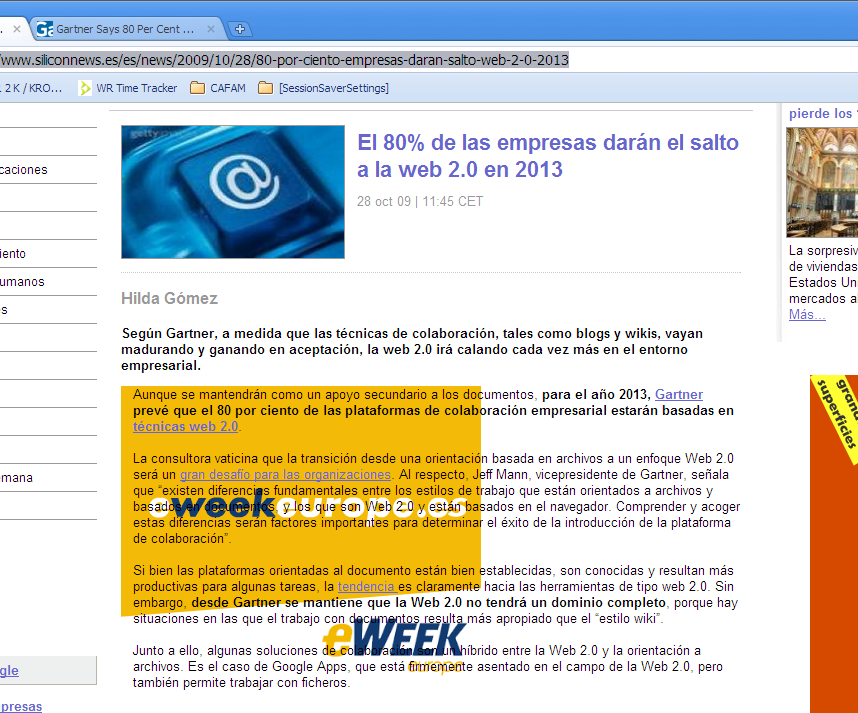I'm reading a new essay by Don Norman with this same title at and it makes me think.
For some reason the conclusions look rather evident to me.
Not being a design researcher, my opinions are simply opinions. But having spent many years alive, especially doing high usability software systems, my opinions might have some value.
On the relationship of technology and humans
It is very uncommon that somebody invented something that is completely out of sync with its epoch, may be Babbage did. Or it happens but silently, and so it falls into oblivion. Like the push Internet technologies of the late nineties, "invented" for the convenience of advertising instead of being requested by the people.
Usually there is an unsaid request from the Society for "something", a request that the inventor "hears" in the silence of his mind.
These requests happen in a context, especially a technological context that makes them feasible.
From Don Norman's list of "powerful inventions" I choose the cellphone as an example. Notice that the regular POTS telephone and the radio are above in the same list. The cellphone is a mashup of telephone and radio. In the meanwhile various intermediate devices existed, like citizen's band radio, pulse-code modulation phone lines, and wireless links in rural areas. All these technologies worked but none was so massively adopted as the cellphone, does this makes them less "inventions"?
What make the cellphone such a great breakthrough was not the invention itself but it's huge adoption. The same can be said of the Internet. And by sure of the original telephone.
Actually I could be saying that somehow all inventions are, in fact, just applications of prior inventions.
The same happens with science
Every now and then a pair of hard-working mathematicians assign themelves the merit of having created something.
This is not by chance, at least not completely. Both thinkers were "hearing" the society's silent request.
Less casual was the simultaneous isolation of the HIV by two research teams, one in USA and the other in France. The society's silent request was deafening then.
Role of design researchers
Design researchers are not inventors. Should we browse the patents held by one great design guru like Don Norman and I imagine that we would not find but small steps aimed at perfection. But not completely new devices. The "incremental" kind of invention.
The Design Researchers breaktrough is in way they influence the mind of people. The book "The Design of Everyday Things" helped many people to realize what was wrong with the operation of doors and computer systems and everything else and helped them change their minds.
It is great that Don Norman wrote it. But if he wouldn't then by sure somebody else would have raised the flag.
There was, for example, Mitchell Kapor's "Software Manifesto" published a couple years after DOET.
The society was somehow expecting the "... Everyday Things" book to be written. When it actually happened we read it and feel that it "interpreted our thinking". We are never completely surprised by the ideas of such "hinge" books. To me it was sort of a "déjà vu", and may be to many other professionals that were expecting their feelings to become ideas.
Macintosh & MS-DOS
Now that you mention it, yes, in the eighties there was a desesperate requiremente for "something" to make the newly created PCs usable. This was another deafening silent request.
Such was the need that the Society was ready to settle for anything, just anything. Thus DOS and later Windows: the real innovators were not listening and the opportunity was seized by somebody else.
Getting to the point
The inventors somehow recreate what the Society asks them to invent. They do not invent in the vacuum.
The Design Researchers are a breed of emergents from the Society that tell that Society what are the needs of their members. Their mission is to hear the silent request.
Great inventions are backed by massive adoption, that is what makes those great inventions great.
Can we think of Google as inventors?
Yes, because the Company has that 80-20 rule for personal projects.
And also because many Google projects do not blossom.
The great invention was the search ranking method and its implementation.
The other great invention by Google that I like very much is Gmail, an email system that combines the advantages of the desktop email (which we already forgot) and those of the webmail. This one is great because it contributes so much to make the people's life better.
Other "inventions" like Google Maps are not actually inventions but better implementations of existing ideas and thus do not qualify as "inventions" ... don't thay? Actually every invention is a new view of something that already existed.












